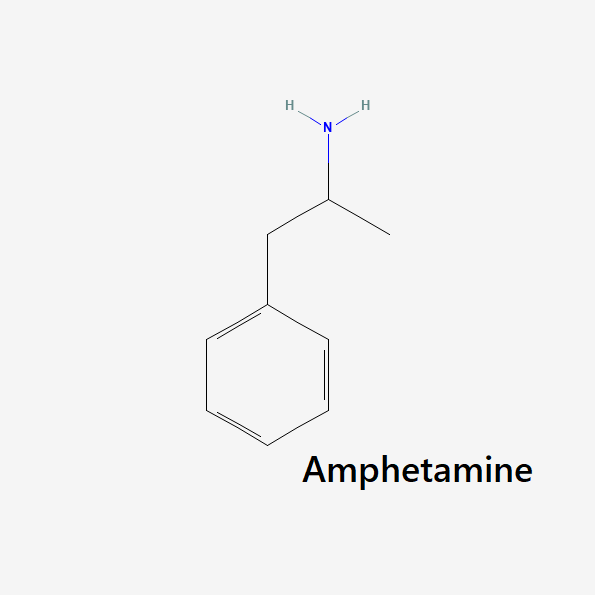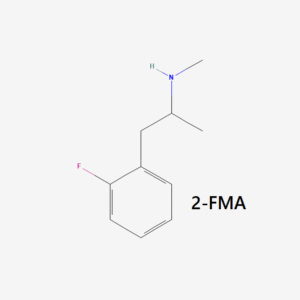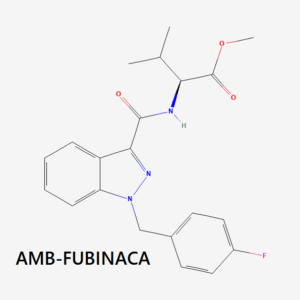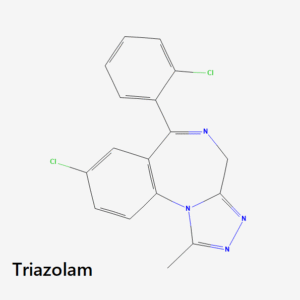What is Amphetamine/Dextroamphetamine Combo (Adderall)?
Amphetamine is an enantiomer — meaning it has two molecular arrangements of the same formula, forming a mirror image of each other. There is the l-amphetamine (levoamphetamine) enantiomer and the d-amphetamine (dextroamphetamine) enantiomer.
Adderall is a 1:1 mixture of racemic (equal parts) amphetamine with just d-amphetamines — forming a total ratio of 3:1 d- to l-amphetamines.
So, if you were taking a 15 mg dose, you would be taking 7.5 mg of d-amphetamine and 7.5 mg of equal parts l-amphetamine and d-amphetamine.
What’s the Difference Between L-Amphetamine, Amphetamine Combo, & D-Amphetamine?
D-amphetamine is stronger than l-amphetamine, and “amphetamine” on its own usually means the mixture of the two. By some reports, d-amphetamine may be as much as 3–5x as strong as its “left-handed” enantiomer [1].
When dealing with something as intricate as a molecule, the arrangement matters — don’t discount l-amphetamine, though. One study found it to be twice as effective as d-amphetamine for the release of norepinephrine (a major component of amphetamine action) from the basal frontal cortex of the brain [2].
Importantly, this is one section of the brain and one function of amphetamine, but it’s important nonetheless. Mixed amphetamines like Adderall use both enantiomers to achieve a longer-lasting — potentially slightly varied — effect.
Why Combine L-Amphetamine & D-Amphetamine?
Research is conclusive when it comes to the benefits of combination amphetamines over taking d-amphetamine alone. What we have yet to prove is why this happens — if d-amphetamine is stronger, why wouldn’t we just include it?
While we don’t have an answer to this question, there are a few prominent theories:
L-Amphetamine Helps Through Competition
While l-amphetamine doesn’t have the same efficacy as d-amphetamine, this may ultimately work in its favor. Nearly immediately after d-amphetamines attach to the dopamine receptors, they begin regulating dopamine activity — l-amphetamines may take over some of the receptors and help slow this effect [3].
This could even be an isolated location “that allows for more rapid downregulation” — or reducing the number — of dopamine receptors. By slowing this effect, the isomer could help its other half be more effective and stick around longer.
Or, this could simply be a matter of “taking up space” and preventing d-amphetamine from accessing all the receptors. As we’ll get into below, d-amphetamine also slows the enzyme responsible for breaking it down before it gets to the receptor.
If the more potent option has to wait around for a receptor to open — and can survive — it could contribute to the added duration [1].
L-Amphetamine Alters Dopaminergic Response
We consider l-amphetamine to be the weaker option of the two, but we’re only checking for specific indicators. We may yet uncover alternative effects we haven’t been looking for previously.
One study discovered a 1:1 preparation of the two wasn’t more effective than either, but the 3:1 formulation of Adderall was, proposing it “may be altering [dopamine transporter] function [4].”
Researchers in this study noted that more l-amphetamine could be detrimental to the overall effect on attention. One explanation for why it may do so is the pharmacological effect of l-amphetamine becoming detrimental after a certain dosage.
While it seems like more competition on the receptor would be a good thing, it might not be if other properties of the enantiomer are active. Alternatively, there may simply be a point where l-amphetamine takes over too many receptors, and d-amphetamine can no longer wait out its turn.
Other Reasons l-Amphetamine Helps d-Amphetamine
The final option is the one we hate the most: we simply don’t know. Exploratory research with low potential for financial gain is hard to get funding for, even for popular medications like this one.
Additionally, we still don’t have a firm grasp on several components of neurology or a solid way to study these effects in living humans. Most research on the topic revolves around rodent studies, and, as you might expect, they’re not very good at explaining how they feel.
L-amphetamine may act on our neurological system in ways we have yet to uncover, or it may serve an important function we’ve never considered.
How Does Adderall Work?
Amphetamines are a large and diverse group of psychostimulants. The main way these drugs work is by increasing the activity of dopamine and norepinephrine in the system [5].
There are a few ways amphetamines can boost dopamine and norepinephrine activities:
- By increasing the production and release of dopamine, norepinephrine, and other neurotransmitters.
- By inhibiting monoamine oxidase transporter 2, which is responsible for storing and transporting excess storage into the brain.
- By preventing the production of proteins responsible for the reuptake (or absorption) of these neurotransmitters — thus increasing the time they remain active in the system.
- By reversing the direction of cellular pumps that move dopamine and norepinephrine around the synapses.




Reviews
There are no reviews yet.